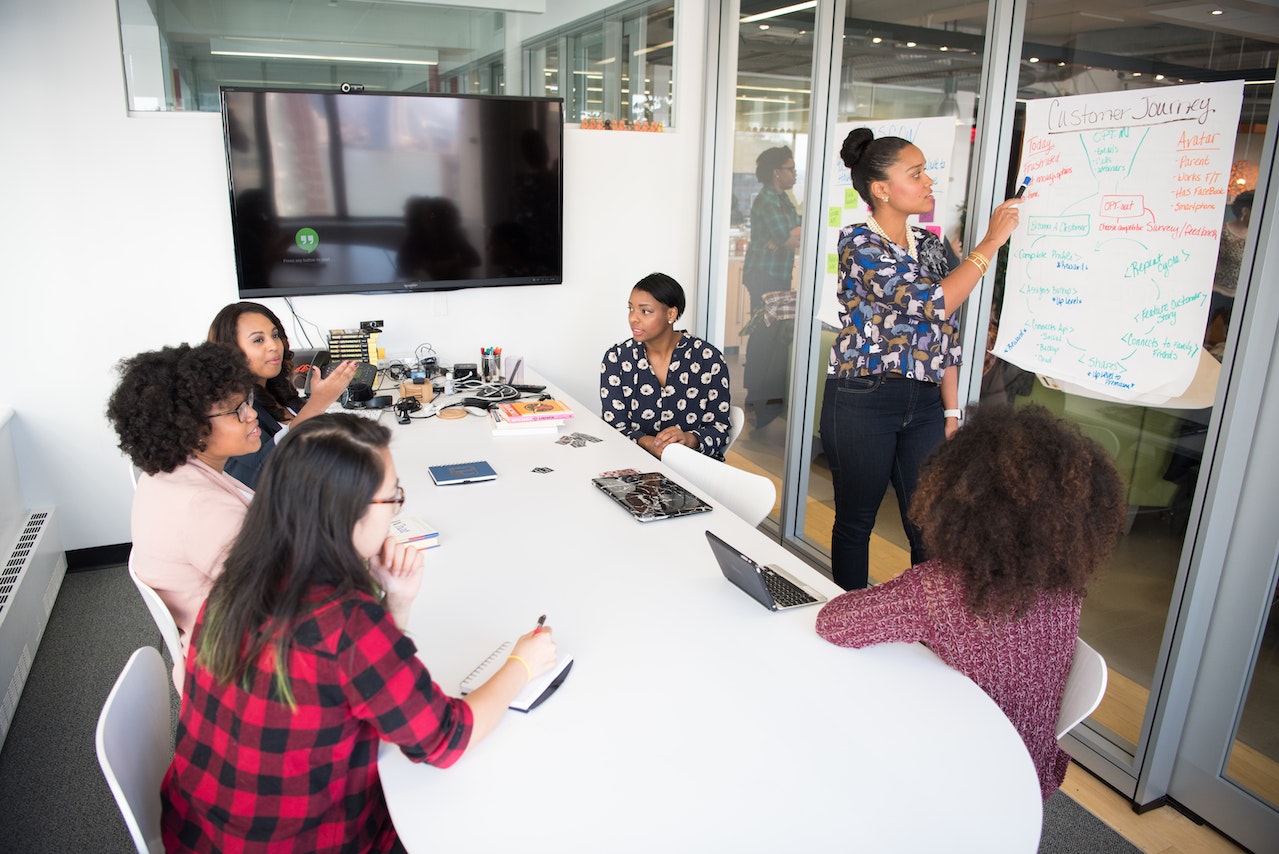Summary
No decision is 100% certain. That's what makes it a decision. Learn how Annie Duke coaches her students and clients around managing uncertainty in decisions, big and small.
When it comes to decision making, uncertainty is a constant factor. We can never be 100% certain of the outcomes of our choices.
However there are tactical ways to address uncertainty – take it from Annie Duke, former professional poker player, author, and decision-making expert.
In this article, we’re diving into Duke's strategies for managing uncertainty in decision making. Whether you’re looking to boost your decision making skills personally or professionally, these strategies can be applied to any area of your life.
The 2 Forms of Uncertainty in Decision Making
According to Duke, there are two main forms of uncertainty that can impact decision making: luck and imperfect information.
1. Luck
Luck refers to the role that chance plays in the outcome of a situation. It can include unexpected events, random outcomes, and other factors that are beyond our control. This is also a key factor to the impact of resulting in decision-making: where the quality of the decision is judged by the outcome.
2. Imperfect Information
Imperfect information, on the other hand, refers to the fact that we may never have complete information about the situation at hand. This can lead to poor decision-making, caused by the gaps in our understanding of the situation.
Both luck and imperfect information impact how we make decisions.
Luck is a time machine problem, while imperfect information is an omniscience problem.
What Does This Mean?
“Life doesn’t fit neatly into a chessboard – it actually fits more naturally at a poker table,” Duke states.
In her course Make Better Decisions, she compares the games of chess and poker to illustrate how luck and imperfect information can impact decision making.
Chess doesn’t have these two forms of uncertainty. The pieces move around the board through acts of skill, not luck. Both chess players can always see their opponent’s pieces and are aware of the next possible move, so the influence of imperfect information is extremely low.
Now, imagine two people playing a game of poker for the same amount of time they would play a game of chess – 1 hour. One person ends up with more chips than the other. Who’s the better decision-maker in this game?
There’s no way to tell. From being unaware of the opponents’ cards to the random deal, there’s a huge influence of luck and imperfect information in poker.
Let’s take a closer look at each of these forms of uncertainty and how they impact our decision making…

How Luck Causes Uncertainty in Decision Making
As stated, the influence of luck in decision making is especially apparent in games of chance, like poker.
To figure out the influence of luck in any particular situation that you’re in, you can ask yourself 'in this situation, can I lose on purpose?'
This ultimately tells you whether or not this is a game of skill.
For example, you can’t lose the lottery on purpose. You fill out the numbers just like anybody else. The skill element in this situation is giving your ticket to the agent and not losing it, but anything beyond that is a matter of luck.
On the other hand, you can absolutely lose a game of chess on purpose.
How to Manage Luck
To manage luck in decision making, Duke emphasizes the importance of two things:
- Embracing small bets
- Thinking in probabilities
By breaking decisions down into smaller, more manageable parts, we can better manage the role that luck plays in our decision making.
And by thinking in probabilities, we can acknowledge that luck plays a role in all outcomes and can better prepare ourselves for potential challenges or setbacks.
For instance:
Imagine you’re considering investing in a new business venture.
There are many factors that can impact the success of the venture, including market conditions, competition, and consumer demand.
After acknowledging the factor of luck in this situation, you decide to make smaller investments in multiple ventures and evaluate the outcomes to inform your future decisions.
This allows you to adapt and adjust your approach over time, rather than risking everything on a single uncertain outcome.
How Imperfect Information Causes Uncertainty in Decision Making
Imperfect information further impacts your decision since you do not have all the information needed to accurately forecast demand.
How to Manage Imperfect Information
To manage imperfect information, Duke suggests:
- Seeking out unbiased perspectives to combat cognitive biases
- Updating beliefs based on new information
Often, we are limited by our own experiences, knowledge, and beliefs that we fail to consider other viewpoints. Seeking out diverse perspectives from different people can provide more comprehensive information to make a better decision.
Updating beliefs based on new information is another strategy for this. Beliefs are not static – they are subject to change as new information becomes available.
It’s important to be open to changing our understanding of a situation as we gather more information, rather than clinging to an initial belief or assumption.
For instance, building on our previous example, you can evaluate the investment opportunity by gathering information on the market trends, potential demand for the product, competition analysis, and industry experts’ opinions.
Doing so will help you minimize the impact of uncertainty and improve your decision-making process.
Combining These Strategies to Make Better Decisions
Traditionally, we make decisions by:
- Thinking about the decision we need to make
- Thinking about what we know
- Combining that with our own experience
While this process can be effective in some situations, it’s not the most reliable (or strategic) method.
To make better decisions, we must consider the outside view in addition to our personal experiences and available information.

Here are 4 steps to making better decisions, according to Annie Duke:
1. Think about the decision you need to make
Begin by clearly defining the decision you need to make.
- What is the problem you are trying to solve?
- What are the possible outcomes of the decision?
- What are the potential risks and benefits?
2. Think about what you know
Consider the information you already have about the decision. This includes your past experiences, your knowledge of the subject matter, and any relevant data or facts you have gathered. Take the time to evaluate the quality of this information and determine if it is accurate, relevant, and unbiased.
If you find that some of the information is lacking, take steps to gather more before making your decision.
3. Consider the outside view
This means looking at a decision from a perspective outside of your own experience or point of view. In turn, this helps you avoid being too influenced by your own biases and assumptions.
To use the outside view, gather information about similar decisions that have been made in the past by others. Look at the outcomes of these decisions and consider how they may apply to your own situation. This can help you get a more realistic sense of the likelihood of different outcomes and make a more informed decision.
4. Combine that with your own experience, then decide
Finally, it’s time to bring everything together and make a decision.
Use the information you’ve gathered, both from your own experience and from the outside view, to evaluate your options and determine the best course of action. Don’t be afraid to take calculated risks or make unconventional choices if they align with your goals and values.
Remember, making decisions is not always easy and sometimes there’s no clear right or wrong choice. By following these strategies, you can improve the quality of your decision making and increase the likelihood of achieving your desired outcomes.
The Bottom Line
Ultimately, managing uncertainty is about being mindful of the factors that influence our decisions and knowing how to address them effectively.
Annie Duke’s strategies provide a useful framework for managing uncertainty in decision making. By breaking down decisions into smaller steps, thinking in probabilities, seeking unbiased perspectives, and updating our beliefs, we can minimize the impact of uncertainty in our daily life.
Want to learn more? Sign up for Annie’s course and get her tried-and-true methods for better decision-making.
Related Courses
Make Better Decisions
Beat decision paralysis. Master a repeatable process for making better decisions in business and life.
Decision-Making with ChatGPT
Make better decisions in the Age of AI. Turn ChatGPT into your strategic thinking partner.
Decision Making like a Pro
Master the most powerful decision making protocols through proven tools, practical frameworks, and real-world applications
Career Pivots: Get Clarity on Quitting, Staying, and What to do Next
6 weeks. Rich in myth. Backed by neuroscience, astrology, & depth psychology. Find out who you are and JUST DO IT - quit, stay, pivot.
Speak to Influence: Work Smarter, Not Harder
In 2.5 Hours, you'll command executive presence that gets you noticed, respected, and promoted.
You might also like

The Single Biggest Problem In Decision Making, According to Annie Duke

15 Tips to Create a More Trusting Work Environment

9 Ways To Make Your Company More Resilient

